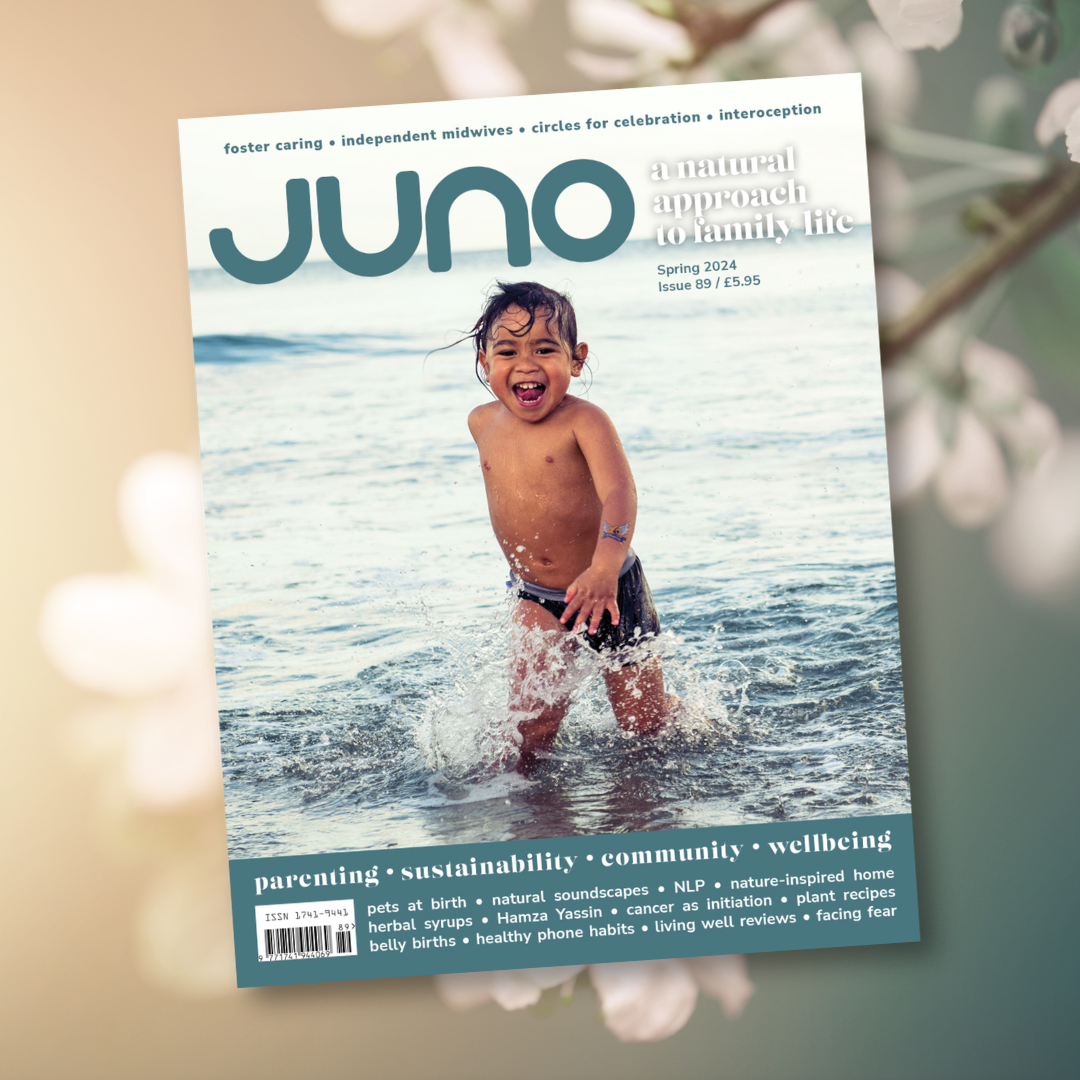Over the past couple of years, I have been attending training courses to learn about the shawl called a rebozo – a woven piece of fabric with beautiful tassels, bright colours and patterns.
Due to the demand from people who would like to own their own rebozo, they are shipped from overseas by birth workers who have a relationship with the weaving families, and our knowledge of their usage in traditional midwifery in Mexico, Ecuador and Brazil is thanks in part to Naoli Vinaver – a midwife herself – who shares her culture. Rebozo ‘manteada’ is the technique used (also known as ‘sifting’) which moves a mother from her sympathetic or stressed state to her parasympathetic or calm state, so that she can relax, rest, and feel in control, able and intuitive in pregnancy and in labour.
Having learnt the techniques in training, I then had to become confident and competent, and this is something I achieved by observing the rebozo’s use in practice, alongside a colleague, before sharing and watching its impact. Now we are in a position to provide an introduction and basic training to our colleagues over the coming year. Our hope is that by extending our skills to all midwives as a team we will have a shared expertise and a collective goal: to help more mothers both experience comfort and rely less on pharmaceutical methods of pain relief. In this way, midwives will have the confidence to offer all the support and feel-good factor that rebozo provides, whilst also respecting the tradition it emerges from.
On top of extending my own knowledge and awareness, and also training colleagues, I’ve also completed online training to enable me to teach others about the benefits of using the rebozo following a birth, and that is what I will talk about today.
During a labour, when we stand upright, the bones in the pelvis expand: its ligaments and fascia stretch and create extra space for the baby to pass through, aided by hormonal influences. The process of expansion is known as ‘nutation’ and its opposite action is ‘counternutation’: the sacroileac joints, sacrum, ileac bones, coccyx and femur are all attached to muscles which all play a part in the opening process, and this is something unique to a female pelvis to facilitate birth. This is why gravity is such an aid to us and why in traditional cultures there is an occasion to mark this passage emotionally, physically and spiritually.
In rebozo speak, the ceremony to honour the end of the pregnancy and birth is known as ‘closing the bones’ and those who practise the tradition call themselves ‘bone closers’.
Closing the bones is a good experience at any time in life, and I have been offering it to some clients who are not pregnant and have never been, as well as those who have recently given birth. The feedback has been extremely positive. For example, the sense of feeling held tight is soothing for some, and for others the feeling of being unwrapped and released is what they enjoy the most. Overall, it appears we all like to be wrapped up; it makes us feel cosy, in the dark, with ourselves yet without diversions and overwhelm of life. To feel safe, comforted, supported and held tight is possibly connected to the time when we were in our mothers’ wombs, like a big hug magnified many times over.
The ceremony lasts anything from one to three hours, depending on the depth the client wants to go into, as well as on any practical considerations such as having a new baby and needing to feed. It consists of relaxing, massaging and wrapping the body in eight rebozos, covering up with a cosy blanket and leaving for as long as a mother needs to rest. After a vaginal birth it can be done as soon as six hours later, the purpose of the wrapping to close the pelvic bones up tight again. This honours the body’s experience of holding and releasing a baby into the world, as well as functionally pulling bones and ligaments back into pre-pregnant position, leaving mum to heal and recover more quickly. In some cultures a daily massage is the norm, so that mum can rest, feed baby and restore. A closing the bones can be received as frequently as a mum likes, although if there had been a caesarean, the advice is to wait several weeks to enable the scar to heal and the internal organs to settle again. I have recently offered this to a mother who has had three babies – her middle baby was sadly stillborn, and now that she has had her third child she is clear she won’t be having any more. The closing was to honour all three of her births and babies, and was very moving for her, enabling her to release trauma and emotions.
However old your children are, I do encourage you to look into booking a closing the bones for yourself, or if you are pregnant, to plan it for your post birth transition. Do contact me if I can help you.
____
FIND OUT MORE
____

Eleanor Copp supports families across the UK, currently online. relaxedparenting.co.uk 07929 857 608
____
First published in Issue 75 of JUNO. Accurate at the time this issue went to print.



